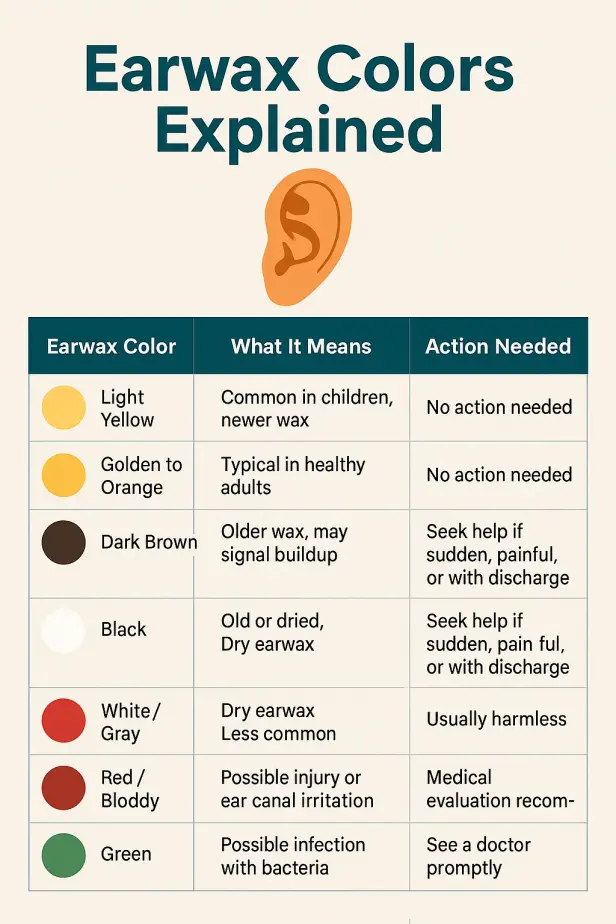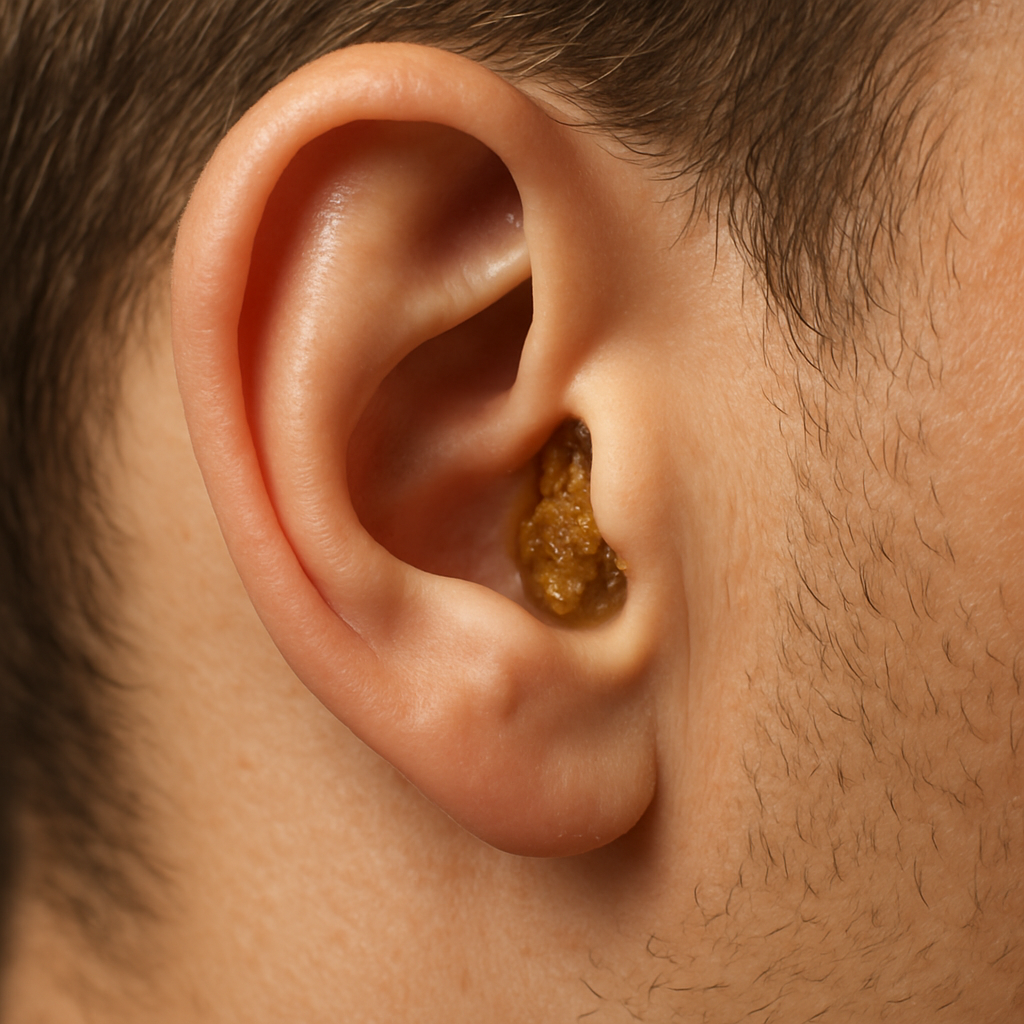Earwax isn’t just a nuisance—it can reveal clues about your ear health. From pale yellow to dark brown or even green, here’s what earwax colors mean and when you should seek help.
Quick Earwax Color Chart

| Earwax Color | What It Means | Action Needed |
|---|---|---|
| Light Yellow | Common in children, newer wax | No action needed |
| Golden to Orange | Typical in healthy adults | No action needed |
| Dark Brown | Older wax, may signal buildup | Consider removal if causing symptoms |
| Black | Old or dried earwax | Seek help if sudden, painful, or with discharge |
| White or Gray | Dry earwax, less common | Usually harmless |
| Red / Bloody | Possible injury or ear canal irritation | Medical evaluation recommended |
| Green | Possible infection with bacteria | See a doctor promptly |
What Is Earwax and Why Does It Vary?
Earwax, or cerumen, is a natural substance that protects your ear canal by trapping dirt, dust, and bacteria. In my 12+ years as an audiologist, I’ve seen countless patients worried about the color of their earwax. Most of the time, it’s perfectly normal. But changes in color, texture, or amount of earwax can sometimes reveal underlying health issues.
Earwax Colors and Their Meanings
Light Yellow or Pale
Often seen in children, light-colored wax is fresh and soft. It’s a sign of normal, healthy ear function.
Golden Yellow to Orange
This is the most common color in adults. It indicates healthy earwax doing its protective job.
Dark Brown
Darker earwax usually means it has been in the ear longer and collected more debris. If you feel fullness, clogged ears, or reduced hearing, it may be time for removal.
Black
Black earwax is often old, dried wax. If it’s sudden, painful, or accompanied by discharge, it could point to an infection or injury and should be evaluated.
White or Gray
Some people naturally produce dry, flaky earwax. This is more common in individuals of East Asian descent. It’s usually harmless.
Red or Bloody
Blood in earwax may result from scratching, aggressive cleaning, or an ear canal injury. Persistent bleeding should always be checked by a healthcare provider.
Green or Yellow Discharge
Green, pus-like, or foul-smelling earwax may indicate an infection. This requires medical attention, especially if pain or fever is present.
Other Earwax Clues: Texture, Amount, and Smell
- Texture: Soft wax is newer; dry, crumbly wax is older. Very watery earwax may indicate infection.
- Amount: Excessive wax can cause buildup and blockage, leading to hearing loss or tinnitus.
- Smell: Earwax typically has little to no odor. A strong or foul smell may indicate infection (see why earwax smells bad).
When to Worry About Earwax
Most earwax colors are normal. But see a professional if you notice:
- Sudden changes in color, especially red or green
- Pain, pressure, or discharge
- Significant hearing loss or tinnitus
- Recurring ear infections
As an audiologist, I always recommend professional removal over cotton swabs, which often push wax deeper.
Safe Earwax Removal
Your ears usually clean themselves. If you experience discomfort or blockage, avoid cotton swabs. Instead:
- Use over-the-counter ear drops or softening oils
- Try gentle irrigation (unless you have a history of ear surgery or eardrum issues)
- See an audiologist or ENT for professional cleaning
For ongoing problems, read our guide on how to safely clean your ears.
Key Takeaways
- Earwax color varies, but most shades are normal.
- Green, red, or foul-smelling earwax should be evaluated by a doctor.
- Texture, smell, and amount also provide important clues about ear health.
- Safe removal methods help prevent damage and infections.

